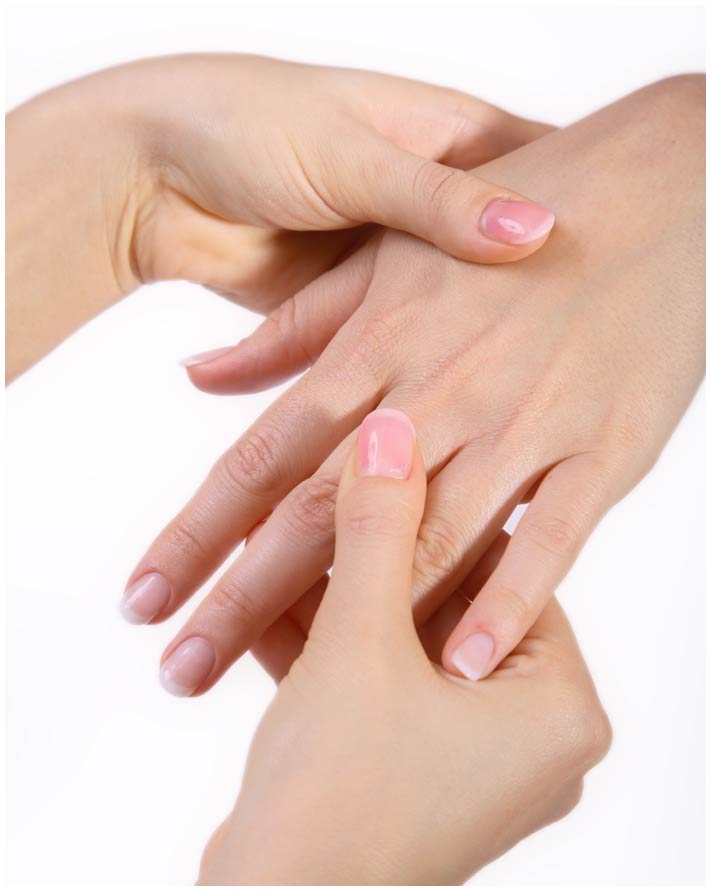We Treat Rheumatoid Arthritis
The term “arthritis” is used to define any condition in which the joints become painful and inflamed due to the breakdown of cartilage between the bones. Arthritis can have one of several underlying causes. A normal joint consists of two bones covered in smooth cartilage and surrounded by lubricating tissues that allow the bones to slide past one another creating the range of motion we associate with bending, pinching, grasping, etc. When arthritis occurs, this soft tissue disintegrates or inflames, making motion at the joint more difficult and more painful. Untreated arthritis can progress to debilitating levels that interfere with normal day-to-day activities.
Rheumatoid arthritis is just one kind of arthritis. Other forms include osteoarthritis, post-injury arthritis, and psoriatic arthritis. In cases of rheumatoid arthritis (or “RA”), the immune system malfunctions and beings attacking the cells that surround and cushion the smooth cartilage. These fluid-filled cells, known as synovial tissue, are designed to lubricate the joints. The injured synovial tissues respond to the attack by swelling and thickening, which results in the classic arthritic symptoms. Over time, the swelling can stretch out the nearby ligaments that hold the bones in place causing misalignment, instability, and deformity. In severe cases, the ligaments may begin to fray or break.
Rheumatoid arthritis can affect any joint in the body, though it is particularly noticeable in the hands where the joints are in constant use during routine activities. The wrist and finger knuckles often exhibit the worst symptoms.
Signs and Symptoms
Pain, inflammation, swelling, and stiffness are common across all causes of arthritis. Rheumatoid arthritis in particular can cause excessive swelling at the joints or along the entire finger, creating a “sausage” shape. Other symptoms more unique to RA include:
- The presence of a soft, moving lump on the back of the hand when the fingers are straightened
- Creaking and/or clicking sounds when joints are moved
- Fingers angling away from the thumbs
- Having difficulty or inability to bend and straighten at particular joints (including Boutonnière deformity)
- Numbness and tingling sensations
- Middle joints bowing down while first joints bow up (Swan neck deformity)
Diagnosis
The diagnosis of rheumatoid arthritis is fairly straightforward. More aggressive cases will be apparent in the shapes and deformities of the joints, fingers, and hands. Less advanced cases can be diagnosed through reported symptoms. X-rays are used to determine how advanced the RA is by measuring gaps between the bones and the shapes of the bones themselves. Because RA has an underlying autoimmune component, blood tests may also be used to support the diagnosis.
Treatment
There is no known cure for rheumatoid arthritis. RA may be treated with pain relievers, inflammation reducers, and/or steroid injections. In some cases, doctors may recommend surgery. Hand therapy is a common, drug- and surgery-free option for both early intervention and late-stage management of RA. With simple exercises, prescribed periods of rest and splinting, and customized lifestyle adjustments, hand therapists can help patients reduce their pain from RA while restoring or retaining as much function of the joints as possible.
Schedule Your Appointment
Call Meridian Hand Therapy Today At (805) 497-1700
Hand Therapy Westlake Village
Discover the Real Benefits of Occupational Therapy
The goal in any hand therapy program is to help the patient return to a productive lifestyle. Working with a hand therapist allows patients to go beyond mere management of their condition by actively working toward a full and successful recovery. In most cases, this specialized form of occupational therapy allows individuals to resume normal function in their day-to-day activities.
Hand therapy focuses on a combination of patient education and training as well as adaptive recommendations and equipment. Patients benefit from learning about energy conservation and joint-protecting techniques. Using their years of experience, hand therapists can recommend a customized set of tools that may include simple exercises, stretches, and regimented activities to improve strength, flexibility, and overall function. Addressing pain, swelling, and wound care is another crucial component of successful treatment.

